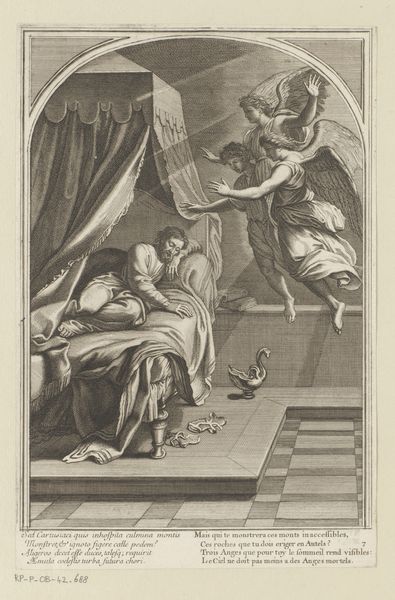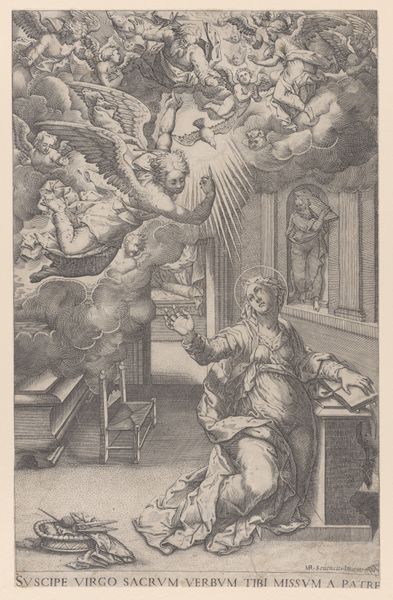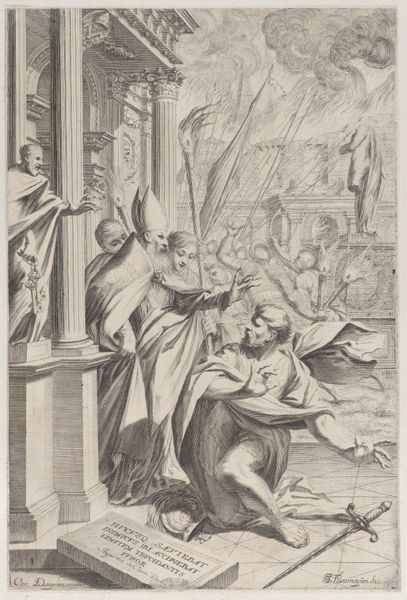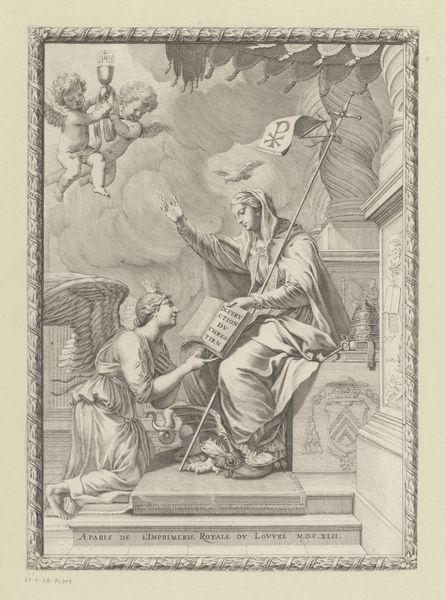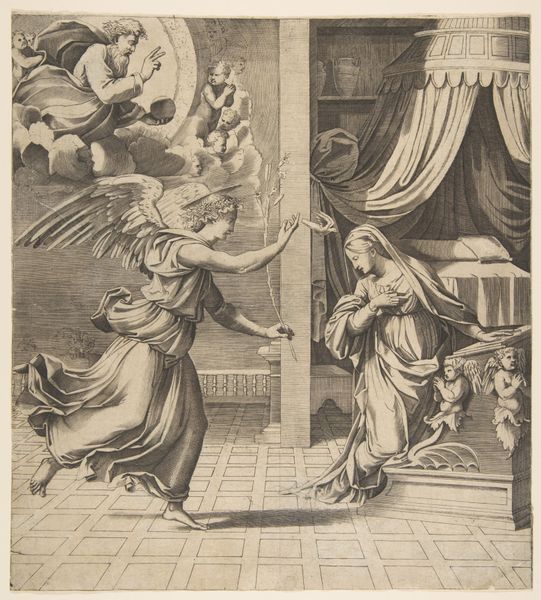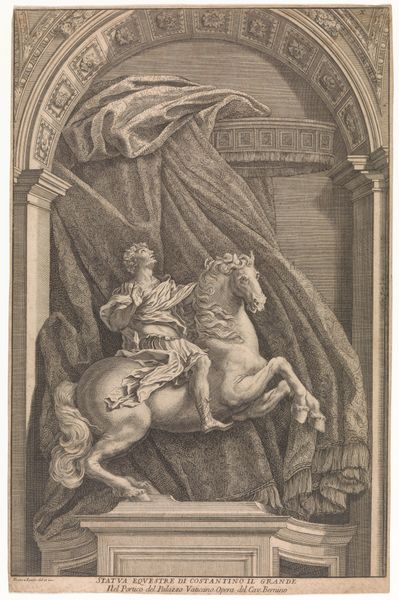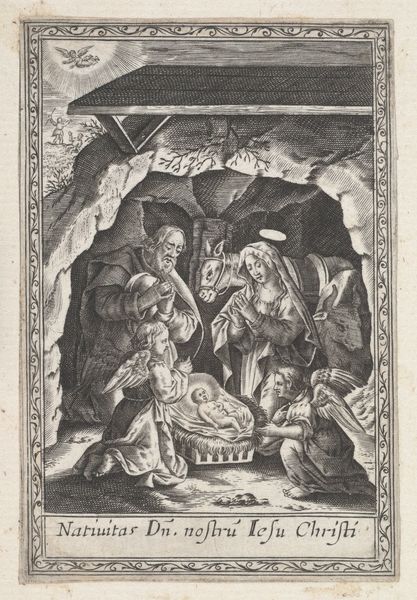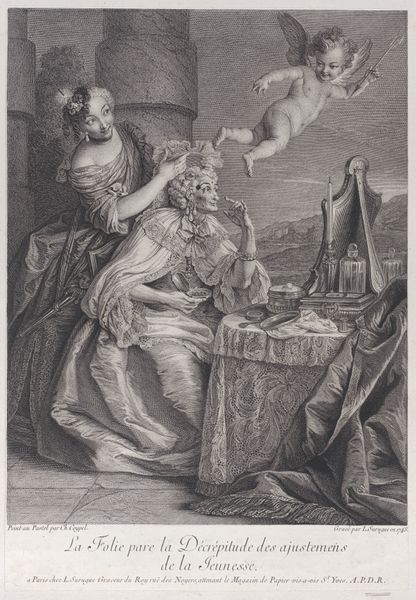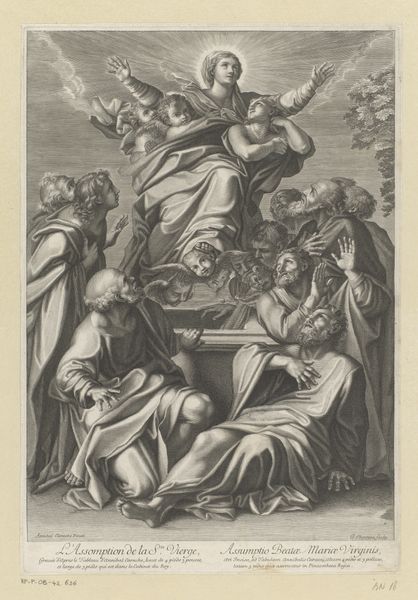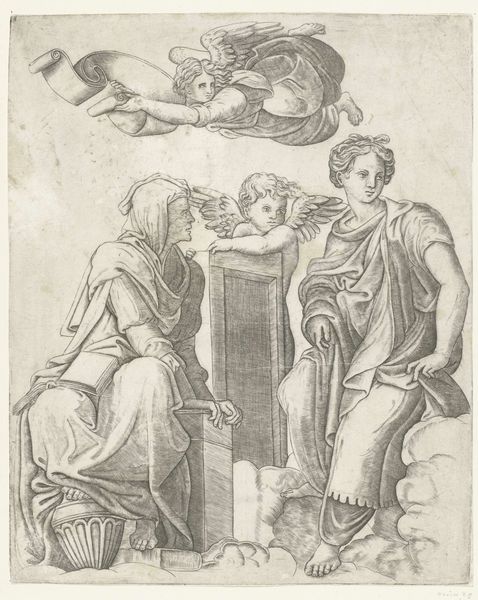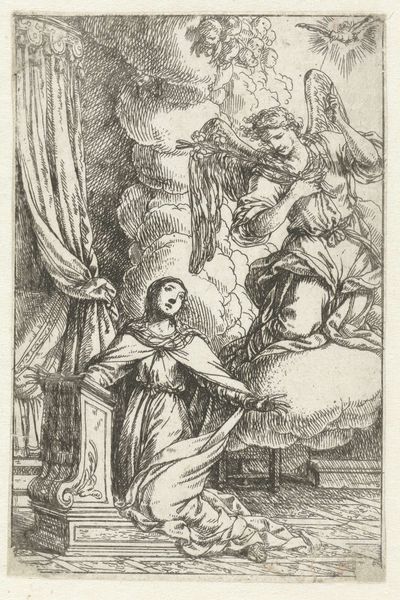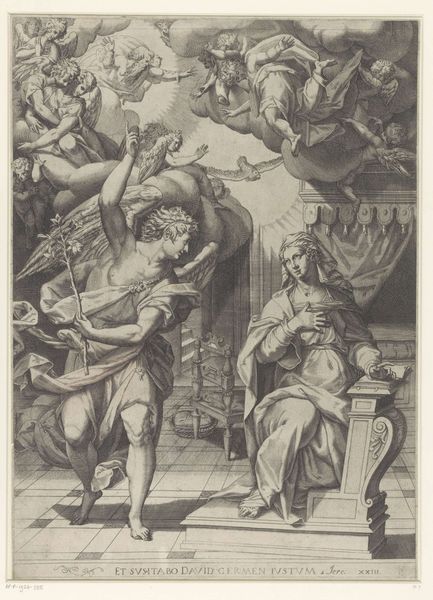
drawing, print, ink, engraving
#
drawing
# print
#
old engraving style
#
caricature
#
figuration
#
11_renaissance
#
ink
#
pen-ink sketch
#
pen work
#
history-painting
#
northern-renaissance
#
engraving
Dimensions: height 185 mm, width 139 mm
Copyright: Rijks Museum: Open Domain
Curator: This is "Annunciation," an engraving dating back to 1587-1589. The piece resides here at the Rijksmuseum and is attributed to Johann Sadeler I, executed with ink in that precise Northern Renaissance style. What strikes you immediately about it? Editor: The intensity, actually. The light seems to burst forth, almost violently, and Mary appears quite startled. I can see both wonder and perhaps a flicker of apprehension in her expression. And that dove... it looms! Curator: It’s a powerful take on a familiar scene, isn't it? Sadeler, working within the traditions of the Northern Renaissance, adds to that well known image. I think there is tension created through both spatial arrangement and a certain nervous line quality in the engraving itself. Editor: Absolutely, the linear nature draws you in. Beyond the iconic elements—the angel, the dove representing the Holy Spirit—the domestic setting is interesting. The discarded items near the spining wheel suggest she was actively engaged in worldly tasks right before this celestial interruption. Curator: A detail reflecting the commonplace made divine. Remember, prints like this served a crucial role at the time. It aided in wider audiences visualizing stories in ways they perhaps had never experienced prior. So it makes sense for an appeal toward the masses using objects recognizable at the time. It shows what everyday virtue looks like. Editor: Yes! And those everyday details carry potent symbolic meaning too. The distaff and spindle symbolize female virtue and domesticity. The act of weaving was equated with creation itself. It connects Mary’s physical task to the divine creation about to occur within her. I think about what this implies to an audience then, let alone the layers for modern reflection. Curator: Context definitely enriches our experience. Looking closely, consider how the political climate of the Reformation would have shaped responses to such overt religious iconography. The Council of Trent had reaffirmed the importance of religious images, thus artwork depicting events and Biblical actors become quite contested depending on who saw it and their intentions. Editor: Fascinating how layers of symbolism interweave with socio-political tension. This humble engraving speaks volumes, reminding us of the human and divine forces converging. I see cultural values embedded here— labor, devotion, faith in the wake of immense structural reformation. Curator: Indeed. "Annunciation" offers not just a depiction, but a potent dialogue between earthly existence and divine intervention, frozen in time but constantly speaking across the ages. Editor: It gives pause for thought, a small window into a world of faith, daily grind, and the visual markers that told this narrative over a century ago.
Comments
No comments
Be the first to comment and join the conversation on the ultimate creative platform.
